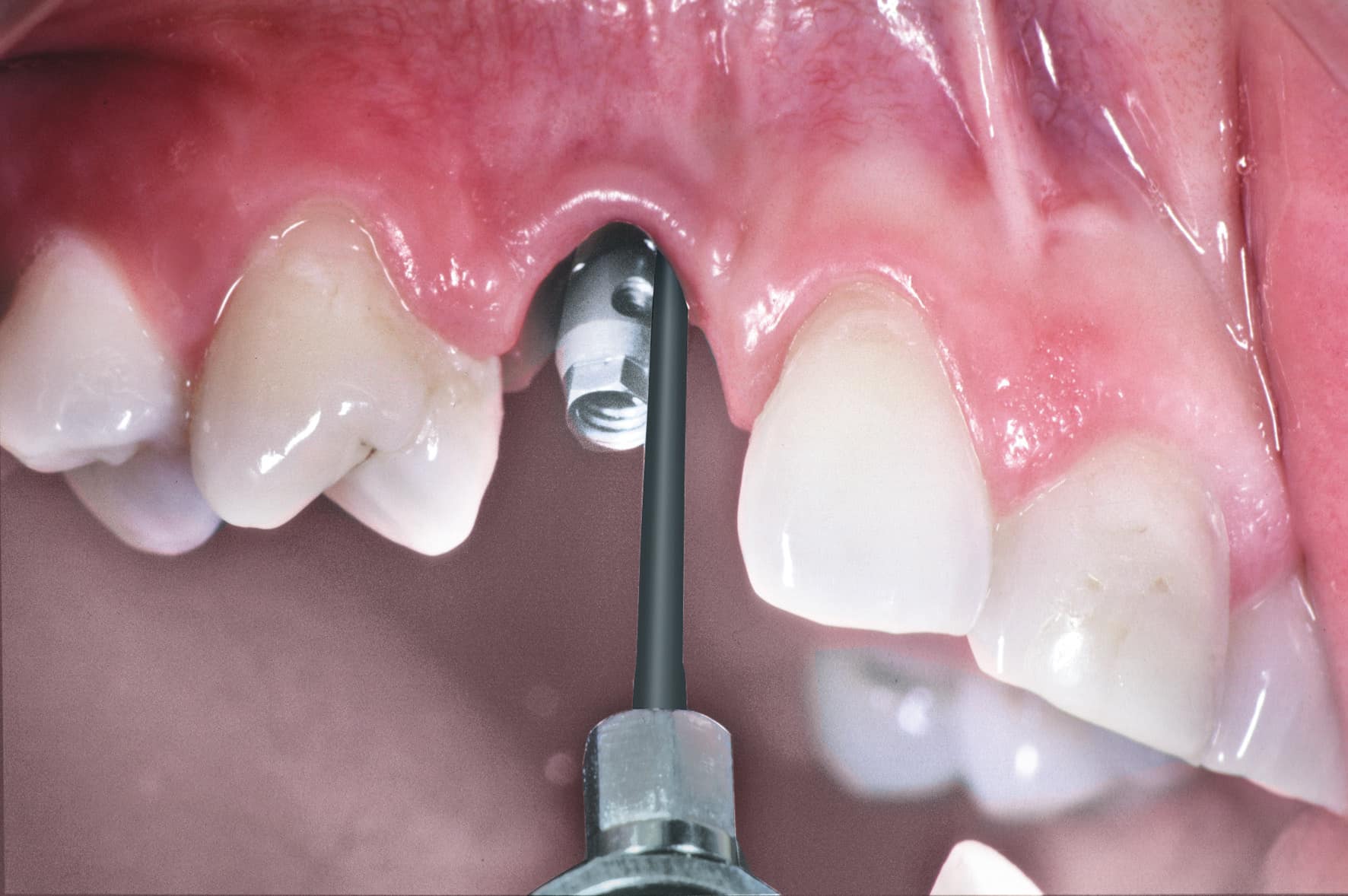General ailments of the parodontium and in particular therapeutic indications of periimplantitis present modern dentistry with challenging tasks. The number of patients with implant-supported dentures is on the increase. Prolonged times in situ and older patients also make for more problems, which are often not discovered until the clinical five-year mark has been passed. According to experts, almost one in two implants is at risk of periimplantitis in the long term.
The innovative Vector® system from DÜRR DENTAL is an effective and very low-aerosol treatment method which is an excellent fit for systematic periodontitis and periimplantitis treatments that are customised to meet the needs of individual patients.
The primary objective of systematic periodontitis and periimplantitis treatments is to prevent infections caused by bacteria and their associated attachment loss. First-line treatment thus includes a thorough removal of subgingival and supragingival plaque. The gentle piezo-electric Vector® ultrasound system has proven its worth in this context in practice.
In particular, the metal surfaces of the implants must not be damaged during plaque removal. Rough surfaces could facilitate renewed accretion of plaque and lead to further periimplantitis infection. A minimally invasive procedure is essential.
By redirecting vibration, the Vector® Paro handpiece delivers oscillating, vertical motion along the tooth centre line and thus does not strike the implant. Non-metal instrument attachments made of fibre composites are also gentle on the implant surface. The probe-shaped, delicate and semi-flexible instrument attachments are suitable for administering thorough treatments without irritating the mucosa. The Vector® Fluid Polish hydroxylapatite suspension aids effective and gentle plaque removal from all subgingival and supragingival implant surfaces.
Compared to conventional treatment methods, the Vector® system delivers almost painless treatment so that local anaesthetics usually need not be applied.
Another diagnostic assessment after the initial non-surgical treatment period provides the basis for planning further treatment. Once infection has subsided, a supporting periimplantitis treatment is indicated for the removal of potentially pathogenic plaques. Depending on clinical requirements, recall intervals will be harmonised with the risk profile and the individual requirements of the patient.
According to many dentists, timely and needs-based application of periimplantitis treatment with the Vector® system is making a valuable contribution to the long-term success rate of implant-borne restorations.

